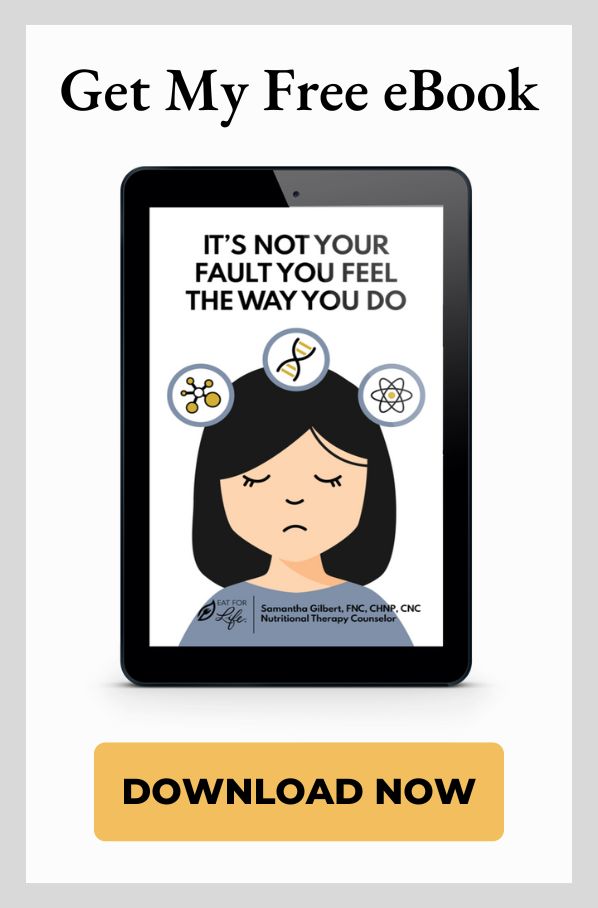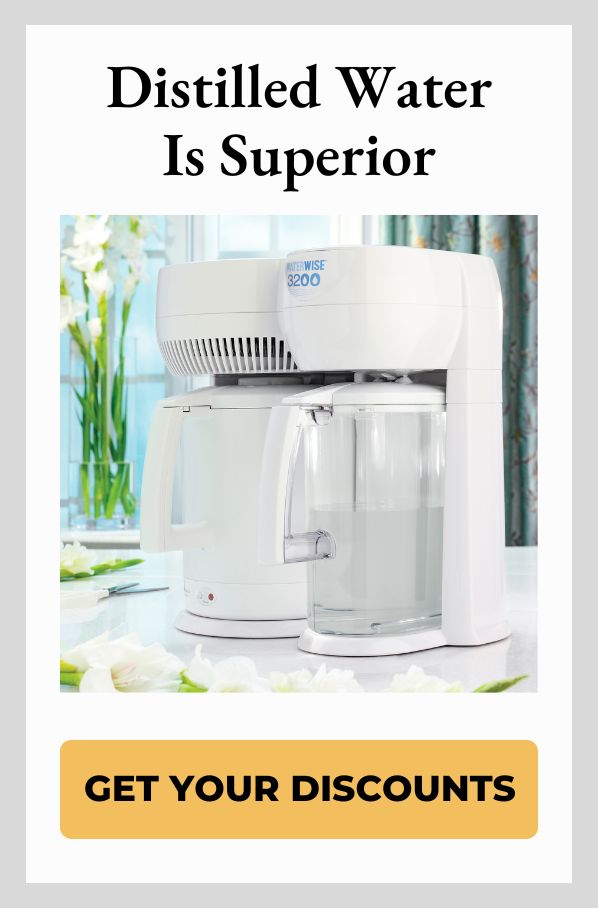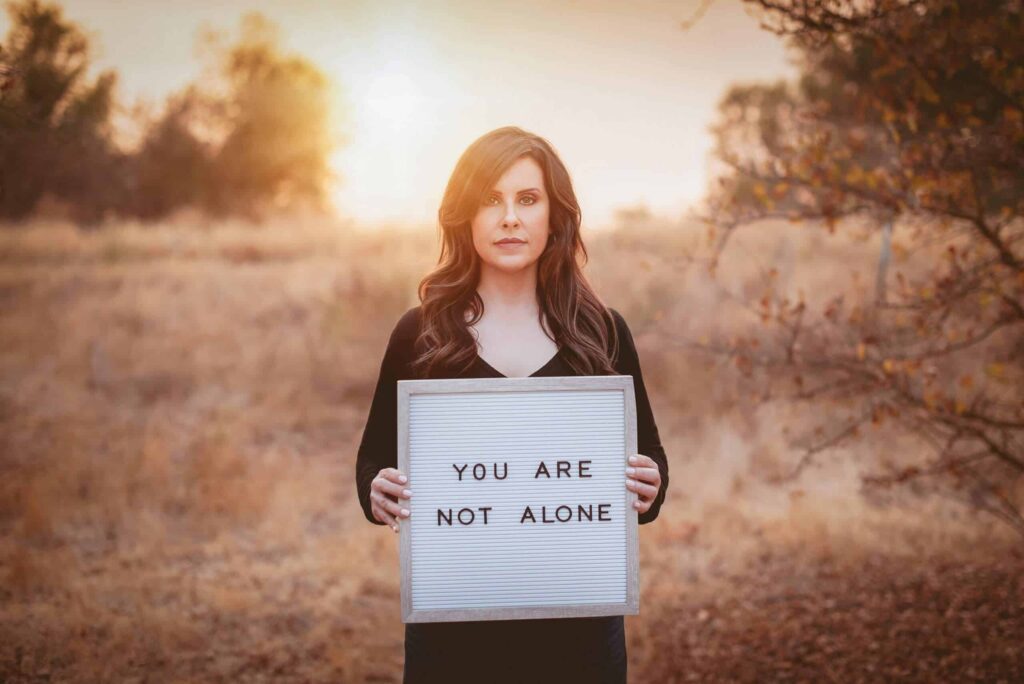Mast Cell Activation Syndrome (MCAS) and histamine intolerance have been buzzwords for quite some time now, but these conditions are still highly misunderstood and impact 1 in 8.5 people. That’s up to 17% of the general population!
Mast cells are our immune system’s first responders, sensing and communicating back to the brain about incoming pathogens, toxins, injuries, and other stressors. When these amazingly complex cells are overtaxed and dysregulated, they will respond to anything as a threat, creating inflammation and a buildup of immune mediators like histamine and cytokines that create a wide range of symptoms from hives and itchy eyes to gastrointestinal distress, migraines, fatigue, musculoskeletal pain, and others.
Today’s special guest has been personally impacted by these conditions and is an amazing testament to the power of a functional and holistic approach to healing. Beth O’Hara is a Functional Naturopath specializing in complex chronic immune conditions related to MCAS and histamine intolerance.
She is the founder and owner of Mast Cell 360 Functional Naturopathy, where she looks at all factors surrounding health conditions: genetic, epigenetic, biochemical, physiological, environmental, and emotional. She holds a doctorate in Functional Naturopathy, a master’s degree in marriage and family therapy, and a bachelor’s degree in physiological ecology. She is certified in functional genomic analysis and is a research advisor for the Nutrigenetic Research Institute.
She designed Mast Cell 360 to be the kind of practice she wished had existed when she was severely ill with MCAS, histamine intolerance, neuroinflammation, Lyme disease, mold toxicity, fibromyalgia, and chronic fatigue. Her mission today is to be a guiding light for others with MCAS, histamine intolerance, and these related conditions in their healing journeys through her Mast Cell 360 Root Cause process.
In this episode, we discuss:
- The role mast cells play in a healthy immune system, and what happens when they never get a break from environmental toxins and psychosocial stress
- The difference between Mast Cell Activation Syndrome and histamine intolerance
- Why the standard diagnostic criteria and testing leave out a large number of MCAS sufferers
- Root causes and triggers for MCAS, including gut inflammation and mold, and how modern technology influences them
- Steps to take now if you suspect you may be struggling with MCAS or histamine intolerance
Listen to the podcast here:
Within the below transcript, the bolded text is Samantha Gilbert and the regular text is Beth O’Hara.
—
Mast Cell Activation Syndrome and Histamine Intolerance with Beth O’Hara, FND
Highly misunderstood and impacting up to 17% of the population, Mast Cell Activation Syndrome and histamine intolerance have been buzzwords for quite some time. What are these conditions and why are they on the rise?
Our special guest has been personally impacted by these conditions. She is an amazing testament to the power of a functional and holistic approach to healing. Beth O’Hara is a functional naturopath specializing in complex chronic immune conditions related to Mast Cell Activation Syndrome and histamine intolerance. She is the Founder and Owner of Mast Cell 360, a functional naturopathy practice designed to look at all factors surrounding health conditions, genetic, epigenetic, biochemical, physiological, environmental, and emotional.
Her sub-specialties are mold toxicity, genetic analysis, and the areas of mast cell activation and histamine intolerance. She designed Mast Cell 360 to be the kind of practice she wished had existed when she was severely ill with Mast Cell Activation Syndrome, histamine intolerance, neuroinflammation, Lyme, mold toxicity, fibromyalgia, and chronic fatigue.
Her mission is to be a guiding light for others with Mast Cell Activation Syndrome, histamine intolerance, and these related conditions in their healing journeys. Through her Mast Cell 360 root cause process, she discovers the unique root factors affecting each of her client’s health issues, building personalized, effective roadmaps for healing.
She holds a Doctorate in Functional Naturopathy, a master’s degree in marriage and family therapy, and a bachelor’s degree in physiological psychology. She is certified in functional genomic analysis and is a research advisor for the NutriGenetic Research Institute. She presents at functional medicine conferences on Mast Cell Activation Syndrome and histamine intolerance, as well as the use of genetics and biochemistry in addressing chronic health conditions. Beth and I dive deep into the role of autoimmunity, mold, and pathogens play in this disorder, as well as electromagnetic field toxicity, trauma and abuse, and the problem with conventional approaches to testing.

Welcome, Beth. I am so excited to have you on the show. We will dig deep into a topic that has a lot of misinformation attached to it and where I see so many people falling down rabbit holes. I’m so grateful to you for this opportunity to provide some clear guidance and understanding.
Thank you so much, too. I’m grateful for this platform to get to talk about this. I have found over and over for those people who keep falling through the cracks are not getting help in functional medicine, integrative medicine, or traditional medicine, and this conversation is often a game-changer.
What is Mast Cell Activation Syndrome?
Thank you for saying that. I appreciate that. What is Mast Cell Activation Syndrome?
I like to start with why people should learn about this. The studies show that this is affecting between the low end 9% to up to 17% of the general population. That’s at least 1 in 10, maybe 1 in 9, or 1 in 8.5. That’s a lot of people. When we look at people who have any kind of chronic health condition, we’re talking about any form of autoimmunity, almost all of them have been linked. Some of them haven’t been studied yet, but almost all have been linked to Mast Cell Activation Syndrome.
If people have mold toxicity, Lyme, any chronic inflammatory condition, Type 2 two diabetes, or thyroid issues, all are linked to these mast cells. These mast cells are some of the key players in the immune system. They are linking other systems in the body as well. I like to think of them as one of our major frontline responders. What they’re doing is they’re out on the front lines. They’re sensing. What are they sensing? It’s toxins. They’re sensing pathogens like Lyme bacteria or food poisoning bacteria. You name it. If it’s a bacteria, it’s a virus. If it’s fungal, that’s molds, yeasts, candida, and these kinds of things. They’re also sensing injury. They’re sensing stress. There are a lot of other things that they sense.
These are fascinating cells because they have hundreds of receptors on the outside. This is how they can be so versatile. They’re one of the most complex cells. There are still things we’ve been studying. Human beings have been studying mast cells since the 1800s. That’s when they were first identified. We are still learning things about them, which I find exciting.
From the last count I’ve seen from Dr. Afrin, who’s one of our lead researchers in this area, there are over 1,000 different kinds of mediators they can release. They have this huge versatility in terms of what they’re sensing and how they’re responding. They are positioned at all of our nerve endings, so they’re constantly in this back-and-forth communication with the nervous system. That’s critical, and that’s a major missing piece in how we’re looking at these mast cells.
They’re in that limbic system of the brain, which is part of our fear and emotion center. We can think about the impact of stress and these kinds of things. They are everywhere our body meets the outside world. Our skin is full of mast cells. Our whole GI tract from the mouth all the way to the bottom, the sinuses, the ears, and the tissues around the eyes is full of mast cells. We have them in our muscles in our bones. Almost every tissue in the body has mast cells except the cornea.
[bctt tweet=”Almost every tissue in the body has mast cells, except the cornea. They’re like the guards of the castle gate.” via=”no”]
They’re like the guards of the castle gate. They are watching for danger, or they’re like, “There’s a bridge that’s out over there. They’re like there’s an injury. We need to go repair that.” They’re the sentinels. They’re seeing what’s happening. If something’s coming in that we don’t want, like a toxin, pathogen, bacteria, virus, or mold issue, they’re going to signal to the rest of the immune system. They’re one of the major signalings. I like to think of them as one of the big conductors of the immune system. They’re calling it in to do its job. That’s what they should do.
Mast cells have gotten a bad rap. We’re like, “We got to shut those mast cells down.” We don’t want to do that because we shut down our ability to respond to these viruses and bacteria. That was part of my own story. I was sick with this and put on lots of antihistamines and mast cell medications as a child. I had mold toxicity. I had Lyme, Bartonella, and Babesia. We didn’t know that back then. This was in the 1980s. None of this stuff was known. It shut down my body’s ability to fight those. I ended up horribly ill, bedridden, and on a cane.
By the time I was 28, I could barely function. I couldn’t go to medical school. I had a full scholarship, but I had to turn it down. I had become this chronically ill patient trying to figure this out, like so many people that are probably reading this. This was one of the big game-changers. It was learning about these mast cells, how critical they are, and what happens when we have chronic toxins and chronic pathogens.
I grew up in an old farmhouse. We moved to the country when I was seven. It was over 100 years old. We didn’t know it was full of toxic mold. I grew up running around the country, so I got bit by ticks all the time. It was something that you were used to happening. You didn’t think anything about it. Even outside of people having those experiences, we live in this major toxic world. We’re exposed to levels of toxins.
We often don’t think about this, but when toxins are put into the environment, they combine and form new toxins that we don’t even know anything about. They can often be even more toxic than actual toxins. When they say, “These chemicals and these factors are releasing our low toxicity,” what about them in combination? We have electromagnetic fields from our cell phones and computers. We’ve never been exposed to that, and that’s part of this epidemic that’s happened over the years. We have these routers in our homes. We never had that before. We’ve got 5g coming. We’ve got Starlink coming that we don’t know enough about.
If you have some guards where the job is to be sensing, monitoring, and making sure everything’s okay, they should be able to be on duty and take a break. If you had to work security duty 24/7 and there were people that you don’t want trying to break into the fortress and you constantly have to fight them off, and then you’ve got toxins coming at you and bridges going out, and you’re having to deal with this 24/7 for months and years on end, we can think about as a human being it would get highly wonky. You couldn’t think properly. You’d be sleep deprived and so on. That’s a metaphor for what’s happening here on these mast cells.
We weren’t designed to have to do this and constantly fight off and repair EMF inflammation. We weren’t designed to constantly fight off the level of epidemic mold toxicity and the toxin levels that we’re exposed to. These mast cells get dysregulated, and that’s at the core. If somebody has mold toxicity, Lyme, chronic Epstein-Barr, autoimmunity, or any of these things, we have mast cell dysregulation. Whether they would qualify for the diagnostic criteria is a whole other piece because that diagnostic criteria is missing 90% of people with mast cell activation. We’re missing 9 out of 10 people that are dealing with that criteria.
When they get dysregulated, then instead of shooting at the invaders, letting the people who bring food into the fortress, and letting the butterflies be, we start shooting at the food delivery. We start shooting at the butterflies. We’re in this broad-spectrum attack mode, which creates a lot of inflammation. We get a huge buildup of things like cytokines. Those are some of the mediators. That has become a household word. A lot of people know what cytokines are. They come from these mast cells and a few other immune cells.
That’s a snapshot of what Mast Cell Activation Syndrome is. It’s where we have these root triggers that affect the signaling of the mast cells, causing them to behave in ways they weren’t designed to behave in. If we want to address it, we don’t want to damp that mast cell response down. We want to fix what’s causing this dysregulation. It’s like if you have a fire burning out of control and you have somebody who keeps coming along and pouring gasoline on it. Do you want to put water on the fire or do you want to stop the gasoline from getting poured on there?
Mast Cell Activation Syndrome vs. Histamine Intolerance
I’m so appreciative of that explanation. I took lots of notes while you were talking because this is something that I strive for in my therapeutic relationships with the people I serve to explain how this happens. I can so relate to your story of struggling and trying to figure out what was going on, what the culprit was, and not getting anywhere with mainstream medicine. That set you on your own path and your own healing journey. From a very deep place, I can relate to that because that led me on my journey to figure out, “Why am I struggling in this way?” I’m curious. Is there a difference between histamine intolerance and Mast Cell Activation Syndrome? If so, could you share with us some of the differences?
Yeah. They’re related but different. With histamine intolerance, histamine is one of the mediators that mast cells produce. It’s the best known. Most people have heard of antihistamines, like Benadryl, Claritin, Allegra, and these kinds of things. Histamine is one of them. Histamine is an interesting molecule as well. It’s not a bad guy. We need histamine. Histamine helps us make enough stomach acid. Histamine is involved in our sleep-wake cycles and circadian rhythms. It has a lot of roles. It’s involved in injury repair and so on. It’s used by the mast cells as one of the things that fight off the incident infections and things like that, but it gets out of control and we get a lot of symptoms.
I want to weave in here symptoms because I didn’t touch on that before. The symptoms of histamine intolerance can be similar to Mast Cell Activation Syndrome. With both, we can get acid reflux where we’ve got too much histamine in the stomach and then overproducing that stomach acid. Some people have both too much histamine and too low stomach acid. They don’t always go hand-in-hand. We can get itching, hives, things like flushing, runny nose, itchy nose, or itchy eyes after eating high histamine foods. These can be things with histamine intolerance.
We can get diarrhea or stomach pains. When it’s significant, we can get vomiting, particularly if we think we ate something that was way too old. Sometimes, there are a lot of histamines that are built up in those leftovers from the bacteria that grow in there. There are a lot of other symptoms that can come along, but those are the classic with histamine intolerance.
Histamine intolerance is an issue with histamine. We could have issues with histamine because we’ve got too much coming in. We can think about eating a lot of those high histamine foods, like spinach. I always say spinach is supposed to be a condiment, not the main course, because it’s super high histamine and high oxalate. It’s one of the highest oxalate foods that can cause joint issues and kidney stones. We’ve got spinach. We’ve got things like pineapple, strawberries, processed meats, ground meats, and fish that sat on a fish counter.
This is one of the things that I try and emphasize. A lot of the histamine lists online have big errors in them. This is because people are trying to get information out and they’re trying to do what’s easier. They copy from somebody else. The kind of people I see are very complex. We can’t make those kinds of mistakes. I always tell people, “Be very careful about the histamine lists you use.” Dr. Joneja has good lists. Yasmina Ykelenstam was good at researching and healing histamine. We have a really good reference list of histamines, oxalates, lectins, and these kinds of foods. It’s got to come from their research data. I’ve seen lists where they say fresh fish. That’s known as scombroid poisoning, which is histamine poisoning if it sat for too long.
We can overeat histamine or we can be overproducing histamine. We then have these various enzyme pathways. I know your audience knows a lot about methylation. That’s one of the pathways that breaks down histamine. We have DAO or diamine oxidase. It breaks down histamine in the gut. If we have any gut inflammation, it is made in the small intestine in those brush border cells. If those have inflammation, they’re not going to produce as much. Gut inflammation can contribute to histamine intolerance and methylation issues.
There are a number of other pathways. Glucuronidation has a role. Acetylation has a role. Most people won’t talk about those. We’ve lots of pathways for histamine. Even the MAO-A and MAO-B will break down amine. Dopamine and histamine are two of the big ones. I love metaphors because they help people that don’t have a lot of biochemistry background. The metaphor I love is if we have a sink and we’ve got the water turned on, that’s like the histamine coming in. We need some histamine, so people who try to eat zero histamine end up in trouble. If we’ve got that water turned on faster than what the drain can drain out, the drain is the enzymes and is the way we break the histamine down, the sink is going to start to overflow. When the sink overflows, you get symptoms.
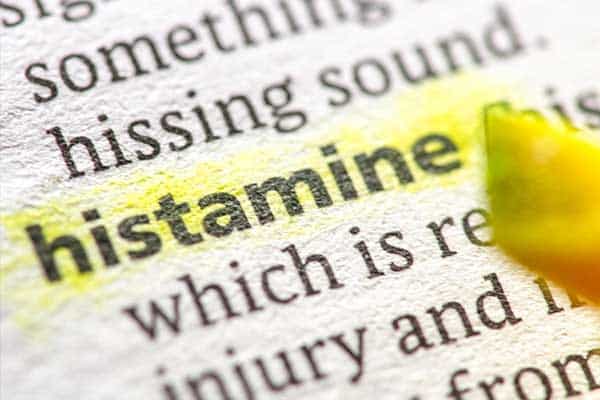
The way that you can work with histamine intolerance is to reduce the flow. Reduce your high histamine foods for a while. Let that sink level come down. Working on the pathways and working on the gut is going to be the drain. We can work on both sides. We don’t want to be super low histamine forever because we lose a lot of nutrient-dense foods. Strawberries have a ton of nutrients in them. They’re great berries, but we want to get back to where we can have some. We modulate it instead of eating strawberries and pineapple with salami, a glass of red wine, and smoked salmon. That’s histamine heaven.
I so appreciate you speaking into this because I get so frustrated with Dr. Google. When I was creating my Low Copper Cookbook, I came across the same issue with the lists online being so inaccurate. It was frustrating for me because I had to learn how to work through my copper dysregulation and then teach others how to do that as well.
We, always as practitioners, don’t want to restrict people any more than is necessary. I love how you’re speaking about the importance of modulating and the importance of how we can’t restrict forever. That’s not what we’re advocating and that’s not a healing path. When I think of methylation, which is an area that I work in very heavily, people are getting confused because we’re using whole blood histamine as a marker for methylation status. They’re looking at that if it’s high and saying, “I suddenly have Mast Cell Activation Syndrome.” I’m like, “That’s not what that means.”
Mast Cell Activation Syndrome Symptoms
There are different systems that control histamine. That’s why I wanted to have you on the show so that we could speak into these different areas and how there’s a connection, but there are quite a few differences. It’s always important to me that people are informed and understand what’s happening. I know you’ve spoken about some of the symptoms that you see. Would you mind maybe expanding a little bit more with regard to Mast Cell Activation Syndrome symptoms? They can be quite severe. I’m curious about what you see in your clinic in that regard.
Yeah. This ties in with the difference between histamine intolerance with mast cell activation. Histamine intolerance tends to be milder. If they repair their gut and get some pathways fixed, then it’s usually handled. I don’t see many of those people because that’s easier. People come after they’ve seen 10, 15, or 20 people and nobody’s getting it. Mast Cell Activation Syndrome is going to be involving numerous of these mediators. It’s usually histamine, but not always, though. There are some people with Mast Cell Activation Syndrome who don’t have histamine intolerance. I don’t have many, but maybe 10% of my practice. Mostly, I see people who have both. This makes it more severe and more complex.
With the Mast Cell Activation Syndrome, let me talk about what the diagnostic criteria are, where that still needs more evolution, and then what we see. We only got diagnostic criteria for Mast Cell Activation Syndrome in 2016. Before then, it was considered theoretical. It’s still not taught in medical schools. I get people who are medical students. They come in and tell me, “We’re not getting taught any of this.” I want to remind people that this is affecting between 1 in 10 to 1 in 8.5 people. As I talk with my colleagues, we’re seeing a very low end. At least 50% of people with chronic illness have Mast Cell Activation Syndrome. It’s more likely around 75% to 80 or 90%. We just don’t have studies on that yet.
With Mast Cell Activation Syndrome and the criteria, I don’t diagnose it, but I want to talk about it from an educational perspective. In the criteria you have, you have to have symptoms in two or more systems. That means the GI and skin symptoms. It could be brain and GI symptoms. It could be brain symptoms or lung symptoms.
One of the ways that people are being missed is that allergists and immunologists, not all, but I see many tell people if they don’t have skin symptoms, they can’t have Mast Cell Activation Syndrome. That’s one of those miseducation things that you alluded to. There are people who don’t have any skin involvement. Those mast cells are doing okay, but it’s going to be these two or more systems. The systems in the body are going to be our bones, muscles, eyes, GI tract, skin, sinuses, bladder, reproductive organs, brain, and nervous system. These are some examples. Another part of that criteria is you have to have an elevation in one of the mast cell markers.
You talked about whole blood histamine. There’s one where urinary and methyl histamine is used. That needs to be a 24-hour collection. It has to be kept chilled until the lab runs it. A lot of times, the labs sit that sample on the counter when you bring it in. It sits there for two hours. That is not valid. Prostaglandins are used. There are cytokines that can be tested and so on. There’s a lot that can be tested.
You may have noticed that I didn’t mention tryptase. Tryptase is often the only marker being tested. Tryptase has almost never elevated Mast Cell Activation Syndrome. It’s supposed to be used to rule out mastocytosis and another genetic condition called Hereditary Alpha-Tryptasemia. These are rare genetic mast cell disorders. I see a few cases of those, but not many because there aren’t many in the population. We shouldn’t be using tryptase to go, “This person doesn’t have mast cells.”
That’s important. I’m glad you said that.
I get a lot of people that come in and say, “I’ve got these symptoms, but I keep being told I can’t have it.” Here’s the other problem. When the lab has to handle it properly, there are very few labs that do that. Armin Labs is probably the best, and then there’s the Jewish Lab System. They can run those okay. There may be a couple of others, but they’re not always run properly. That’s because these haven’t been used a lot historically. People are getting caught up to speed.
The other thing is these markers are up and down in the blood quickly for fifteen minutes. You got to get lucky. I’ve known practitioners who’ve told me, “This is what I’m doing because I have to get insurance coverage for my clients. They’ve got to get that diagnostic code, which means I’ve got to have a marker.” They’re having them provoke a flare, which is always hard on people, and then come in and be there for eight hours. They have in-house testing. They’re drawing their blood every hour to try to catch that window and get lucky. We need to work on that piece, but it’s the best we have.
If you think about other things like Type 2 diabetes and how long that’s been in evolution, it’s very early in how this is being seen by traditional medicine. There’s a third criteria, which is that there has to be an improvement in symptoms with a mast cell stabilizing or antihistamine medication. There is a problem here, with the exception of cromolyn sodium. Every medication as it’s formulated, if it’s not compounded, has mast cell-triggering ingredients. People may not get any relief because they’re getting titanium dioxide, colorings, potassium sorbate, sodium benzoate, and these kinds of triggers. That needs a little work as well.
Here’s what we see. We see people with mystery cases. They generally have a lot of symptoms. I have a symptom survey on the website people can take. That comes out of the research data on what are the definite symptoms that are correlated with Mast Cell Activation Syndrome. There are more, but these are the ones that were validated in the research. People total up their points, and generally, if you have around 50 points or more, you need to be thinking about mast cell activation issues in that family.
I have people who do have classic skin symptoms. They get hives, itching, and flushing. My cheeks are always ruddy. I never wear blush because if I do, I look like a clown. People can also have that pale complexion. These are going to be skin symptoms. I have some people that have never had any skin symptoms and put anything on their skin. It doesn’t bother them one bit. That’s what the stereotype is. It’s the itching, hives, or the allergy symptoms like itchy eyes, runny nose, swollen eyes, swollen nasal passages, and postnasal drip.
A lot of people with those symptoms in the sinus area do this throat clearing. When I met my husband, I would do that because I have all the systems symptoms. I’m a very complex case. He’d be like, “What do you want?” I’m like, “Nothing. I’m just trying to get the phlegm down.” It took a few months for him to be like, “She’s not trying to get my attention.” We get those kinds of sinus symptoms.
People might get swelling and things like that. We can then get the GI tract anywhere along there. I’ve had children who, no matter what they ate and no matter how low histamine it is, got their throats closed every time they ate. People can get acid reflux, stomach burning, diarrhea, or constipation. Those are any of these in the GI tract.
We’ve also got the cardiovascular system. Low blood pressure is more common, but people can have high heart palpitations or chest pains that aren’t heart attacks. These are some of the symptoms you can get. People can get the brain and nervous system, so they’ll have insomnia. You can have migraines, anxiety, and depression. Mast cells are involved in neurotransmitters. People can get neuropathies, pain, and tingling. I’ll tie that in a little bit later.
We then got lungs, so we can have asthma. We can have shortness of breath. We can have phlegm in the chest. That’s a chronic, non-infectious continual phlegm production. We then have the bladder. You can have bladder pain and burning. Some men get prostatitis. I was talking to a man. He had this chronic prostatitis. There is interstitial cystitis in women. There is also vulvodynia where you have this vulva pain that’s horrible. If you have anything around there, you can have infertility menstrual issues.
Thinking about the systems, people are going to have issues with their eyes. The most complex cases, like mine, are going to have symptoms everywhere. I used to have horrible bone pain and muscle pain. Fibromyalgia is connected. All the thyroid immunity is connected. People don’t always have all of these. We’re looking at a collection in two areas. If you only have five symptoms and they’re all in one place, then it’s probably not mast cell activation. A lot of times, people don’t think about it until they do that symptom survey. They’d be like, “I didn’t think about it. I have trouble with waking up all night long and that might be connected,” or, “I didn’t think about it. I have this low-grade anxiety that I ignore.” Many people, when they get into it, realize, “I do have symptoms in multiple places here.”
[bctt tweet=”If you only have five symptoms and they’re all in one place, then it’s probably not mast cell activation.” via=”no”]
Thank you for breaking that down. I love how you talked about a systems approach. Everything is connected. Everything matters. Everyone is unique. That’s why I get so frustrated with some of the stories that I hear that you’ve already shared. I know you hear that every day in your practice where people are being gaslighted. Medical gaslighting is what I’ll call that. They’re told, “Either you do or you don’t,” or, “You’ve got to have this certain test.” They’ll throw a bunch of medications at people. It breaks my heart. I know it breaks your heart, too, to see that.
Mast Cell Activation Syndrome and Dysbiosis in the GI Tract
I love how you also spoke about markers fluctuating because clinically, we know that can be pretty common with a wide variety of tests. Nothing is 100% accurate. Lab testing helps us. It’s important, but we also have to look at the person. We have to look at their history, family history, and symptoms and go about that holistic approach. I’m so glad you spoke about that. I would love it if we could dive into gut inflammation because you and I both see gut inflammation as a major underlying cause. What’s the connection, and what role does dysbiosis in the GI tract play in Mast Cell Activation Syndrome?
I want to start honing in on addressing that and then pull it into a big picture here. We do have tons of mast cells that line the gut. One of the tests that are occasionally done is a biopsy of the cells in the gut lining and then to stain them to see if there are extra mast cells in the gut. The whole GI tract is lined with mast cells in the gut. I’m not 100% anti-gluten, but we need to be careful about gluten, particularly with how much glyphosate is sprayed on it.
There are lots of toxins in our food and water. I am shocked sometimes. I run chemical toxin panels on people and see how much waterborne or water-carried toxins are in their systems. They think they’ve got good water filters. Most of the water filters on the market that are being advertised as the top there are not getting it. They’re not getting all of it. When you get dysbiosis, you’ve got these pathogenic bacteria creating inflammation. Anything that creates inflammation is going to trigger these mast cells. What are they going to do? They are going to create more inflammation because that’s their job. That inflammation should stay in control.
[bctt tweet=”Anything that creates inflammation will trigger mast cells, which creates more inflammation.” via=”no”]
We have this terrain here where we don’t have the mechanisms to keep it in check anymore. Beyond diet and beyond the toxins that are being consumed in water and food, why are we getting dysbiosis? What are these major root triggers? I see a lot of people with Lyme and co-infections. I also always go to why you have chronic Lyme. Other people get bitten by ticks. They might have an acute case, but then they’re fine or they never become symptomatic. Why is that? One of the biggest linking pieces I have found over and over, I’m not alone in this, is mold toxicity. It has truly become an epidemic. Why is mold toxicity, all of a sudden, a big deal?
If you grew up in a 100-year-old house as I did that’s lined with mold, you’re going to get mold toxicity. People are getting mold toxicity in brand-new houses. They’re getting mold toxicity in houses that are five years old. Schools are notorious for it as well as college dorms and churches. There are a few factors. We build houses tighter than we’ve ever built them before. That was part of the energy laws in the 1970s. That traps humidity in the walls. Anytime you have humidity over 50% for more than 48 hours, you have mold growth.
All along the coastal areas are hotbeds. I have yet to have a client on the east coast of Florida, or Texas, other than the Panhandle, Coastal California, and the Pacific Northwest who didn’t have toxic mold in their home. I’m in Cincinnati, and we’re on the Ohio river. This area is highly humid. That’s one thing. We’re trapping humidity. We don’t have airflow. It’s not that I want us to go back to pre-1970 and blow all the heat up to the sky. We solved one problem, but we created a new problem.
The other thing is many years ago, that was when we first started getting routers in people’s homes. Several years ago, we picked up Wi-Fi. There are some preliminary studies that were shown. They need to be validated, but I know this is true. Mold grows hundreds of times faster in the presence of a router. There’ve been studies where people put the exact number of colonies of mold in a dish, put it next to a Wi-Fi router, and then put the exact same number of colonies in a shielded box where there was no EMF, like a faraday cage. They would then track it over time and compare it.
Some of the early things that have been done by Dr. Klinghardt was he was showing 600 times faster growth on that Wi-Fi router. This is why it’s an epidemic. You think about what this is doing in our homes. We don’t even have a clue how that’s affecting mold colonization in the body. We do have a mold epidemic. We have some studies that show that 50% of all buildings in the US have toxic mold. We’re talking about homes, churches, and schools. These are places where they close up for the summer and are not using humidity control and so on.
Mold disrupts every system in the body. It disrupts the immune system and affects the pathogen-killing balance. It takes that down. It takes one side and takes up the mast cell and another chronic inflammatory side. We get this tip, “I can’t kill things off,” from Lyme, co-infections, and even colds or flu. Either people get sick all the time or they never get sick. They say they never get sick, and that’s not a good thing. That means they’re not creating an immune response. They’re just harboring these pathogens.
We have this chronic inflammatory cycle going on. Mold disrupts the nervous system, the limbic system, and the vagal nerve signaling. That’s also tied directly into these mast cells. You can’t separate them. There’s an access between the nervous system, immune system, and hormones. We can’t learn those properly as separate systems because they’re not. It’s like saying, “Let me teach you the thumb and the little finger and not teach you that they’re connected by the palm.” That’s how that goes.
Mold gets dumped into the gut and it tries to get processed into the liver. You get liver enzyme issues. It affects the pancreas. You get blood sugar issues or gallbladder. When it dumps into the gut, it’s going to cause that dysbiosis. You get these chronic SIBO cases where people do protocols over and over. They can’t get it figured out, or they get a little better, so they stop the protocol, and it’s back.
I talked with somebody who had been on nine SIBO rounds of medications and still didn’t have any long-term improvement. She’d be okay for three months and it comes back. I use this metaphor that we’re trying to build this house of health. We’re trying to get the foundation down. We’re trying to get the first floor built. Trying to get SIBO done is like picking out the shutters and seeing if we can get those on when you don’t have the first floor framed out. The mold is a wrecking ball that is going to knock down on what you did. You’re going to try it again, but it’s going to come through and knock it down.
Mold disrupts the mast cells. You name it. It can be the reproductive system or our whole hormone system. If we have mold, we’ve got to address the nervous system. We’ve got to calm it down. We’ve got to calm down these mast cells and we’ve got to detox the mold. Once that’s handled, people can get the chronic SIBO or chronic Lyme handled.
People have been on IV antibiotics. I get them. I’ve been on IV antibiotics for four years. The Lyme’s gone, but they’re still symptomatic. It keeps being attributed to Lyme, but 95% of the time, the Lyme’s been eradicated. Everything else has been eradicated except the mold because it won’t respond to those antibiotics. That’s the number one root trigger I see in our practice. About 95% of my clients have mold, and they have no idea when they come in usually.
Mast Cell Activation Syndrome Contributors
I moved to North Carolina from California. It gets very humid here. I’m noticing the differences. The air quality is better here than where I was in the Central Valley, but because of the humidity, I’m noticing things in the home that I’m living in, which is about twenty years old. I wonder if we can talk about trauma and spiritual and abuse factors that also contribute to Mast Cell Activation Syndrome.
I’m so glad you asked this. There are three major pieces I see missing in a functional approach. One is this emotional, spiritual side and the trauma element. They’re structural pieces. I find about half of our clients have their first cervical vertebrae out. They rarely know it, and that puts pressure on the vagal nerve. The vagal nerve is involved with the healing response and motility. That’s constipation, diarrhea, food sensitivities, and mast cell activation.
I found I have all the cerebral spinal fluid buildup on my brain because of some early injuries. That’s why I’m still in food sensitivities. Are we in touch with nature and the rhythms of nature? Are we getting outside? Are we putting our feet on the ground? Having your bare feet on the ground is extraordinarily healing. That’s what we naturally do. That’s what animals do when they need to heal. They get on the ground and get that specific magnetic field of the earth that’s very healing for us. We wear rubber-soled shoes, so we never get them.
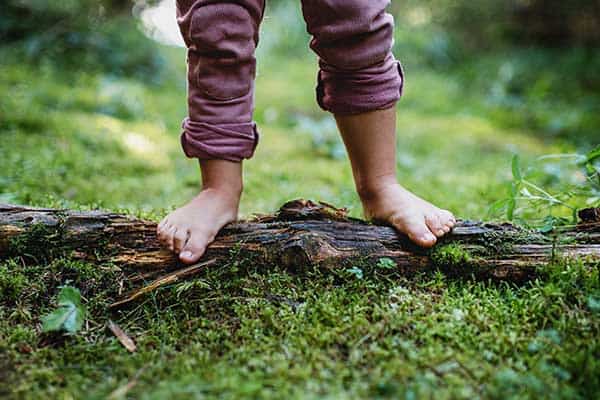
Coming back to the trauma piece, people often don’t think about the full extent of trauma. We think about trauma as being veterans in a war situation or somebody who was horribly, physically, emotionally, mentally, or sexually abused. Those are traumas, but it’s also having a medical procedure when we were young. I had all these GI issues. I had to have a barium enema when I was three. I didn’t understand that. I didn’t know why that was happening. That’s an example. Witnessing trauma is also seeing someone die when we’re too young to understand it or being in car accidents. It’s these kinds of things, especially when they happen early. Particularly, it’s even more impactful when they’re chronic and there have been a number of them. I was somebody who never fit in as a child. I’m mildly Asperger’s. I’m on the autism spectrum. I didn’t get kids, so I got picked on a lot. I got bullied in school. That’s a chronic one. I hated going to school. I loved learning, but I couldn’t figure out how to fit in. A lot of children have these kinds of experiences.
It also has to do with how we perceive it. Some children had verbal abuse as children. They’re like, “That’s part of my culture. I came from a loud, boisterous Italian family. Everybody was screaming at everybody.” It didn’t impact them. I’m a highly sensitive person. I can feel somebody’s feelings if I’m walking the trail around the lake from 40 feet away. I’m extremely sensitive, so it impacts me more than it might impact somebody that isn’t sensitive. That affects our nervous system development. That’s going to affect the immune system development and hormone development.
I was kicked in the head by a horse when I was nine, so that’s part of this cerebral spinal fluid. That was highly traumatic. I crossed over for a period of time. I didn’t know how to process that. We want to think about these things. I’m so scientifically minded that I ignored that for quite some time. When I finally got the impact of it and the significance of it, I went and got a master’s in marriage and family therapy. I then got a specialty in this whole Psycho-Neuro-Endocrine-Immunology. That’s our stress state if we’ve had trauma.
We even have chronic stress at work. I have so many people that are in abusive work situations. They tell me about it and I’m like, “That’s a personality disorder. You’re being abused.” The key is that this is an element of healing. If we’ve had these pieces, we want to take a look at the whole picture. We can’t cover it with biochemistry and some supplements. We’ve got to take care of the nervous system. If we’ve had these, it’s going to affect the vagal and limbic systems.
I did a whole course on this if anybody needs help with it. That nervous system is a core piece. That’s where I have everyone in my practice start. Whether they had trauma or not, being this chronically ill is hard. It’s emotionally hard. There’s a healing component for almost everybody around that. If we have mold, we have to work on the nervous system signaling because it’s gotten disrupted. That’s how it ties in. The spiritual piece is no matter what somebody’s belief is, it doesn’t matter. We need to tap into that there is something bigger than us. That’s extraordinarily healing as well, however people language that or experience that.
Healing From Mast Cell Activation Syndrome
Thank you for giving us an overview of that and the importance of the traumatic experiences and the spiritual and abuse factors. I’m curious. What are some things people can do to start their healing journey?
There are a few things. If you suspect Mast Cell Activation Syndrome, take that symptom survey. If you have a mystery case, take that symptom survey. You can find it in the menu on our website, over at MastCell360.com. Clean up the diet. Make sure you’re eating clean. Some people don’t have to go low on histamine but at least get junk food and processed foods out.

The nervous system is huge. You have to have a limbic program. There’s only a handful of those. You also have to have some vagus nerve programs. There are lots of those. Generally, people need more than just gargling and humming. Those are good, but we need some more. The more modalities, the better. Take some mast cell calming supplements. There are some things people probably haven’t heard of, like perilla seed extract. It is helpful. I love baicalin. That’s not a full-spectrum Chinese skullcap but a baicalin extract. Those can be helpful. I cover a lot of those in a supplements class for people that are looking at doing that. Those are the main areas to start.
Get some urine testing. See if you have your own mycotoxins. We’ve got a whole blog with tons of free resources. We have whole blog posts on how to test and what are the best tests for those mycotoxins. Those would be my top ones in that order. Clean up the diet, work on the nervous system, get some mast cell calming supplements, and then look into the mold.
Thank you so much. I appreciate your wisdom and your knowledge in this area. What you bring to the world is truly extraordinary.
Thank you. I so appreciate it. I love what you’re doing. There are too many people suffering like you and I had to. They don’t have to because we have answers. We have ways of healing that we didn’t even know about when you and I were going through all of this. The fact that you offer this platform is a major service. Thank you.
Thank you.
—
This episode is jam-packed with so much wisdom. I didn’t want it to end. I’m especially glad Beth mentioned toxins in water and why most water filters, such as Brita and those filters that come with your refrigerator, are unsuccessful in properly filtering water. That is something I am always educating my clients on. As Beth has shared, medications are sometimes necessary, but in these kinds of chronic illnesses, medications won’t address the underlying root triggers.
This is the key to healing. Never give up. Find the right person who gets your case and can help you with your unique root triggers so you can heal. Remember, just because it’s not in the medical literature does not mean it doesn’t exist. Research states things in black and white, but in a clinical setting, there are always many shades of gray. You can find Beth at MastCell360.com. Don’t miss an episode of this show. Be sure to hit the follow button on your favorite player.

